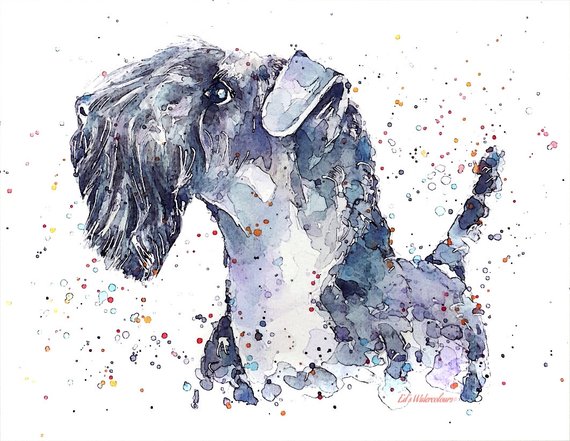
You get one chance to get this right.
In Irish, the name of this breed is “Brocaire Gorm,” translated literally as the “blue terrier.”
Yeah, we figured you’d all answer “Kerry Blue Terrier.” Good job!
If we were feeling charitable, we could have included the word “Kerry” in our hint, in which case we would have added some form of the word “Ciarraí,” or maybe “Gaelach” or “Éireannach.” Shoulder shrug. Our grasp of the Gaelic language is rusty, which is to say non existent. That said, our homework suggests that while “Brocaire Gorm” means “blue terrier,” technically speaking, it means a very grayish blue, a nuance that that Gaelic speakers would already know. But wait, it gets better. “Gorm” can also mean “blue-tinted” or “bluish.”
It may seem like semantics, but in the dog world, and particularly to the people who love and work to preserve the Kerry Blue Terrier, it does matter. Puppies in this breed are born black, and if their coat doesn’t “clear,” or change color by the time s/he is eighteen months old, the dog’s color is a disqualification in several kennel clubs, though they can still be registered.
How likely is that to happen? A few Kerrey Blues (very few, actually), carry the a/y allele. When two of these dogs are bred together, a wheaten colored Kerry can show up (and yell “surprise! to its gobsmacked breeder). A Kerry Blue develops its fabulous color because of the dominant G allele.
It takes a lot of courage for a caring breeder to share mismarked or unusually colored puppies showing up in a litter, and while we won’t provide pictures that these folks have provided to other sources because we don’t have their consent, we salute them. If you’re curious about what these dogs look like, or how this happens at a more fundamental level, simply do a Google search for “kerry blue terrier color genetics.” It’ll be worth your time.
Image: “True Blue” in watercolor by Eddie Kagimu of EdsWatercolours is available for purchase as a print from an Original painting here.
